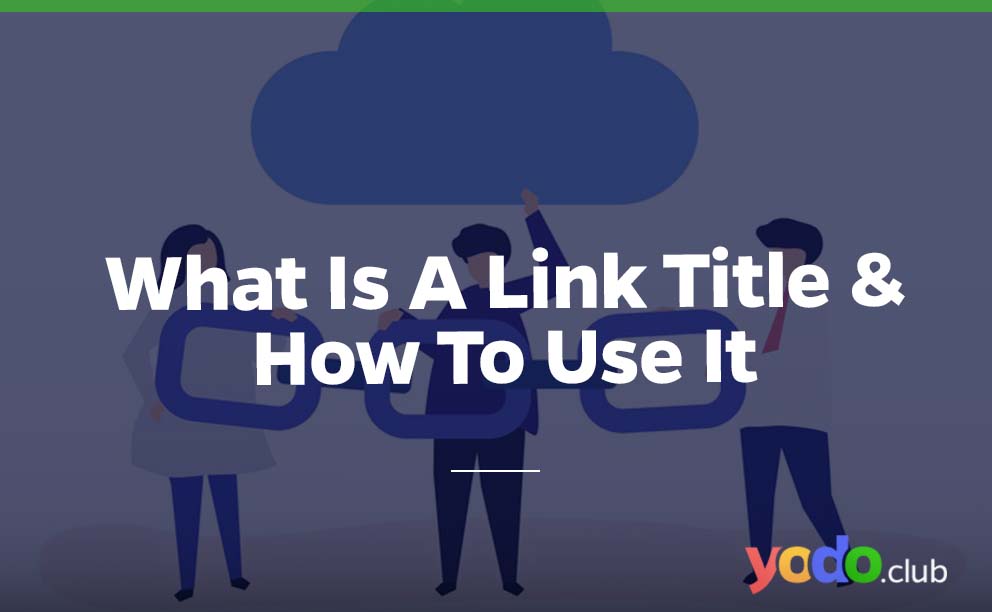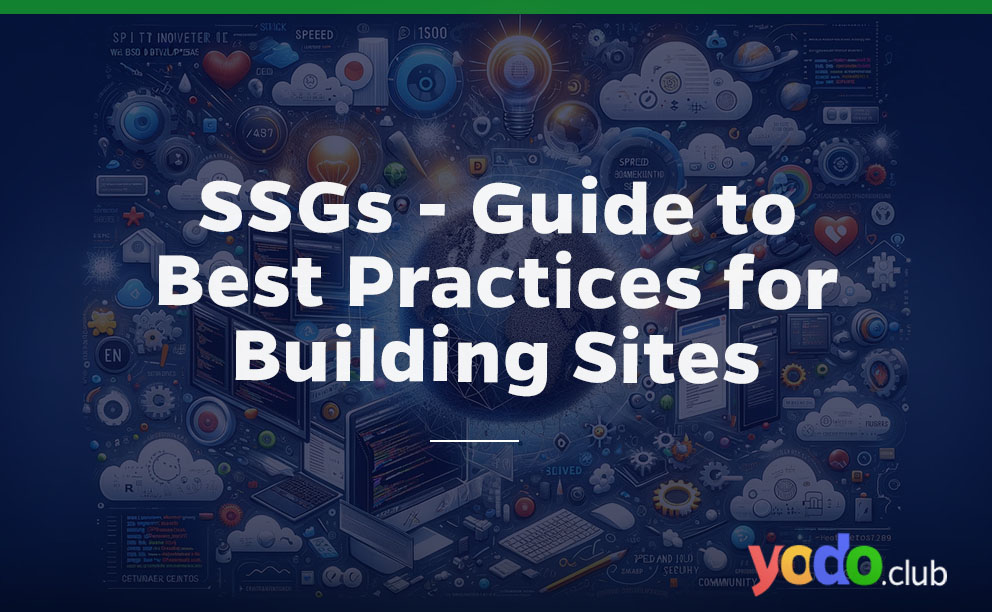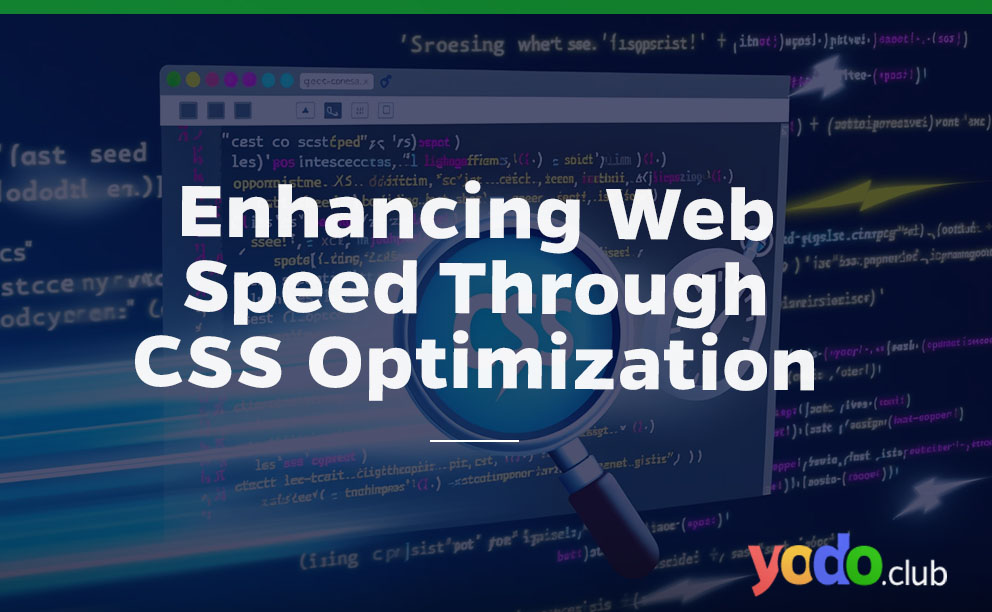Hyperlink attributes play a vital role in the realm of SEO, encompassing elements like link titles and alternative text. Staying current in the dynamic landscape of SEO involves adhering to evolving rules and practices. These attributes are more than mere technical details; they are essential for clarifying the context of your links and influencing how search engines, such as Google, perceive them.
Whether you’re dealing with paid or free links, using the correct attributes is crucial to prevent any misinterpretation by search engines, which could lead to suboptimal results. After all, SEO is fundamentally about achieving favorable outcomes. The path to superior results lies in adopting best practices and aligning with Google’s Webmaster Guidelines. For instance, using duplicate alternative text as link title text is discouraged.
Search engine optimization can be dissected into two main categories: on-page SEO and off-page SEO. On-page SEO revolves around optimizing your website’s content and structure, ensuring that it’s both reader-friendly and search engine-friendly. In contrast, off-page SEO encompasses activities like link-building and social media engagement. These two strategies harmonize to make your website more discoverable to readers and assist search engine bots in comprehending your content thoroughly.
In the expansive realm of SEO, the optimization of title links and link title attributes is a facet that often flies under the radar, despite its relevance to both on-page and off-page SEO efforts.
But firstly let’s dive into what is a link title and its link title attributes!
Table of Contents
What is a Link Title?
Link titles, often referred to as “title attributes” or “title tags,” are essential components of web content. They are used to provide additional information about a hyperlink, enhancing the user experience and making web content more accessible. These titles can be applied to various types of links, including text links and image links.
What are Hyperlink Attributes and Their Impact
Hyperlink attributes are elements within the HTML code that provide additional information and context about a hyperlink. Understanding and utilizing these attributes is essential for optimizing web content, enhancing user experience, and ensuring accessibility.
Here are some key hyperlink attributes and their impact:
Hypertext Reference (href): The “href” attribute specifies the destination of the hyperlink, which is the URL of the linked page. It is the most crucial attribute and plays a central role in SEO. A well-structured “href” attribute helps search engines understand the linked content and improves the ranking of the page.
Title Attribute: The “title” attribute, often associated with link titles, provides supplementary information about the link’s purpose. While it is primarily utilized for user accessibility and understanding, it can also indirectly benefit SEO. Descriptive link titles within the “title” attribute can enhance user engagement and the user experience.
Rel Attribute: The “rel” attribute signifies the relationship between the linked page and the current page. It has implications for SEO, particularly in cases where you want to signal to search engines that a link is nofollow, preventing the transfer of link equity.
Target Attribute: The “target” attribute determines how the linked page will open. Options include opening the link in the same window or in a new tab. The choice of this attribute affects user experience and behavior but has a limited impact on SEO.
Aria Attributes: Aria attributes are essential for web accessibility. They provide information to assistive technologies, such as screen readers, in conveying the purpose of the link to users with disabilities. Aria attributes are crucial for ensuring that all users can navigate and understand the content effectively.
How to Create Effective Link Titles
Creating effective link titles is essential for improving user experience and enhancing your website’s SEO. Let’s explore how to do this effectively.
Link Title Description: Ensure Clarity and Accessibility
Providing a clear and concise description in your link titles is a fundamental principle. When your link titles succinctly convey where the link will lead, it significantly enhances user understanding and accessibility. Users, including those with disabilities, rely on these descriptions to navigate your website effectively. Clarity in link titles ensures that every visitor, regardless of their abilities, can engage with your content seamlessly.
Use Keywords: Optimize for SEO
Incorporating relevant keywords into your link titles is a strategic move to improve your website’s SEO. Keywords act as signposts for search engines, helping them understand the primary topic of the linked content. By aligning your link titles with appropriate keywords, you enhance your content’s visibility and relevance in search engine results. This can lead to higher rankings, making it easier for users to discover your content.
Keep It Concise: User-Friendly Approach
Brevity is a virtue when it comes to link titles. Short and to-the-point titles are not only user-friendly but also prevent confusion and clutter on your web page. Users prefer concise link titles that quickly inform them of the linked content’s subject matter. Avoiding lengthy titles ensures that your links remain visually appealing and easy to scan, contributing to a positive user experience.
Avoid Ambiguity: Promote Clarity
Vague or generic link titles should be avoided at all costs. The link title’s purpose is to convey specific information about the linked content. Ambiguous titles can lead to confusion and hesitation among users, potentially deterring them from clicking the link. Instead, opt for precise and descriptive link titles that leave no room for misinterpretation.
Relevance Matters: Ensure a Seamless User Journey
The relevance of your link title to the content it leads to is paramount. Misleading or unrelated link titles can result in a poor user experience and potentially damage your website’s credibility. Users expect a seamless journey when they click a link, and the link title should align with that expectation. Always ensure that your link titles are directly related to the content they point to, offering a consistent and reliable user experience.
The Structure of HTML Link Titles and Their Importance
HTML (Hypertext Markup Language) provides a specific attribute, known as “title,” for creating link titles. The structure is simple and typically looks like this:
<a href=”destination_url” title=”Your Link Title”>Link Text</a>
The “title” attribute allows you to add the link title, which is displayed when a user hovers over the link. This is a powerful way to provide additional context without cluttering your content.
The importance of HTML link titles lies in their ability to enhance accessibility and user understanding. When a user hovers over a link, the link title appears, aiding those with disabilities and providing valuable information.
The Role of Anchor Text in Optimizing Link Titles
Anchor text is the text that appears as a hyperlink. It’s crucial to align your anchor text with your link title and the linked content. By using relevant keywords in your anchor text, you signal to search engines and users what the linked page is about.
Incorporating anchor text effectively can enhance both SEO and user experience. When anchor text matches the link title and the linked content, it creates a seamless and informative user journey.
The Significance of Link Titles in SEO
Search engine optimization (SEO) is a fundamental aspect of online content, and link titles play a vital role in this domain. Let’s take a closer look at why link titles are so crucial for SEO.
Exploring the Crucial Role of Link Titles in SEO
Link titles are not just a cosmetic addition to your web content; they have a direct impact on SEO. When search engines crawl and index web pages, they consider a wide range of factors to determine how to rank those pages in search results. Link titles are among these factors, and they help search engines understand the content and relevance of the linked page.
How Link Titles Impact Webpage Ranking and Visibility
Link titles influence web page ranking by providing search engines with valuable context. They help search engine algorithms understand the subject matter of the linked page. When search engines have a clear understanding of your content, they can better match it to user queries, ultimately improving your visibility in search results.
Imagine you have a link with the title “Best SEO Practices.” If someone searches for “SEO tips,” the presence of this link title can help your page rank higher because the link title is semantically relevant to the user’s query.
What is a Link Title on an Application?
Link titles serve various purposes and are applicable in different contexts. Let’s delve into how they are used in job applications and web applications.
Link Titles in the Context of Job Applications
In the realm of job applications, link titles refer to the titles or labels associated with hyperlinks, which direct applicants to various sections or documents within an online job application platform. These link titles are designed to make the application process more straightforward and efficient for job seekers.
Relevance of Link Titles in Web Applications
Web applications, such as online forms and platforms, make extensive use of link titles to enhance user experience and ensure smooth navigation. Link titles in web applications play a pivotal role in making these platforms more user-friendly and accessible. They include:
-
- Guiding Users: Link titles guide users to specific sections or features within the web application. For instance, a link title like “Upload Resume” in a job application platform directs applicants to the section where they can submit their resumes.
- Clarity and Accessibility: In web applications, ensuring clarity and accessibility is paramount. Link titles provide additional context for users, making it easier for them to understand the purpose of each link.
- Streamlining Processes: Link titles streamline processes within web applications. They help users move through complex forms or applications with greater ease by providing concise and informative labels.
- Accessibility and Inclusivity: Just as in web content, link titles in web applications contribute to accessibility and inclusivity. They assist users with disabilities in understanding the links’ functions, improving their overall user experience.
- Enhancing Efficiency: Link titles in web applications enhance efficiency. They save users time by reducing the need for trial and error in navigating the application.
Link Title Accessibility
Web accessibility is about making digital content usable and understandable by a wide range of individuals, regardless of their physical or cognitive abilities. Link titles are an integral part of this effort, as they provide context and information about hyperlinks. Here’s why accessibility matters:
-
- Inclusivity: Ensuring link titles are accessible makes your web content more inclusive, allowing all users to navigate your website effectively.
- Compliance: Many countries have web accessibility laws and guidelines in place. Ensuring your link titles are accessible helps you comply with these legal requirements.
- Improved User Experience: Accessibility isn’t just a legal obligation; it’s also about providing a positive user experience. When users can understand and interact with your content easily, they are more likely to engage with it.
Tools and Techniques for Link Title Generation
Link title generators are valuable tools in the realm of web content creation. Their purpose is to assist content creators in generating relevant and effective link titles. Let’s explore what link title generators are and why they are important.
Link title generators are software or online tools designed to suggest or generate link titles for hyperlinks. These tools analyze the content or context of a link and provide recommendations for titles that are concise, descriptive, and meaningful. Link title generators can be particularly helpful when you have numerous links to manage, as they streamline the process of creating informative link titles.
How to Effectively Use a Link Title Generator
To use a link title generator effectively, consider the following techniques:
-
- Content Analysis: Begin by analyzing the content of the link and the surrounding text. Understanding the context of the link is essential for generating relevant titles.
- Keyword Integration: If you have specific keywords you want to target for SEO, ensure they are integrated into the link title. Link title generators can often suggest suitable keywords based on your content.
- Conciseness: Keep the generated titles concise. Avoid long or convoluted titles that may overwhelm users.
- Descriptiveness: The generated titles should accurately describe the linked content, providing users with a clear idea of what to expect when they click the link.
- Test and Review: After generating titles, it’s essential to test them by considering how they appear in the context of your content. Do they enhance user experience and provide clarity?
Real-Life Examples of Link Titles
To better understand the practical application of link titles, let’s explore some real-life examples in different contexts, including YouTube videos, web articles, and e-commerce websites.
YouTube Video Titles: YouTube video titles are a prime example of how link titles are used. They provide a sneak peek into the video’s content and aim to entice viewers to click. For instance, a video titled “10 Tips for Better Photography” informs viewers about the content and its relevance.
Web Article Titles: Link titles in web articles are often seen as hyperlinked headings or subheadings. They guide readers to specific sections or pages within the article. For example, a link title like “Read More About SEO Strategies” directs readers to an in-depth article on SEO strategies.
E-Commerce Product Titles: In e-commerce websites, link titles are critical for product listings. They should be descriptive and compelling. For instance, a product link title like “Premium Leather Handbag with Multiple Compartments” conveys essential information about the product.
Role of Meta Tags in Link Titles
Meta tags play a complementary role in link titles, particularly in web content and search engine optimization. Let’s explore how they are interconnected:
-
- Meta Titles: Meta titles, often referred to as title tags, are part of the metadata of a web page. They provide a title for the entire page and are displayed in search engine results. Meta titles should align with the link titles within the content to maintain consistency and relevance.
- Meta Descriptions: Meta descriptions are brief summaries of a web page’s content. They serve a similar function to link titles in search engine results, providing users with a preview of what they can expect. Aligning meta descriptions with link titles enhances user understanding and improves click-through rates.
- SEO Impact: Consistency between link titles, meta titles, and meta descriptions can improve SEO. When these elements work together, search engines can better understand the content’s relevance to user queries.
Frequently Asked Questions
1. Do links need a title?
Links do not necessarily require a title, but providing descriptive link titles is strongly recommended. Link titles are essential for enhancing user experience, improving accessibility, and aiding in SEO. A meaningful title provides context about the linked content, making it easier for users to understand where the link will take them. It’s especially important for individuals who rely on assistive technologies like screen readers.
2. How to copy a URL?
To copy a URL (Uniform Resource Locator) from a web browser’s address bar, follow these steps:
-
- Highlight the URL by clicking and dragging your mouse cursor over it.
- Right-click on the highlighted URL.
- Select “Copy” from the context menu.
- The URL is now copied to your clipboard and can be pasted elsewhere, such as in a document or another browser tab.
3. What is URL format?
A URL format is a standardized way of representing web addresses. A typical URL consists of several components, including:
-
- Scheme: This specifies the protocol used, such as “http” or “https.”
- Domain: This is the web address, like “www.example.com.”
- Path: This identifies a specific resource or location on the web server
- Query: Often used for passing parameters to a web application.
- Fragment: Points to a specific section within a web page.
- A basic URL format is: scheme://domain/path?query#fragment
4. How to read a URL?
Reading a URL involves understanding its various components. Here’s how to interpret a URL:
-
- The scheme (e.g., “http” or “https”) indicates the protocol used.
- The domain (e.g., “www.example.com”) is the web address you’re visiting.
- The path (e.g., “/folder/page.html”) specifies the location of the resource on the server.
- The query (e.g., “?id=123”) contains parameters for dynamic content.
- The fragment (e.g., “#section1”) points to a specific section within a web page.
Each component serves a specific purpose in identifying and locating web resources.






 & Passion.
& Passion.